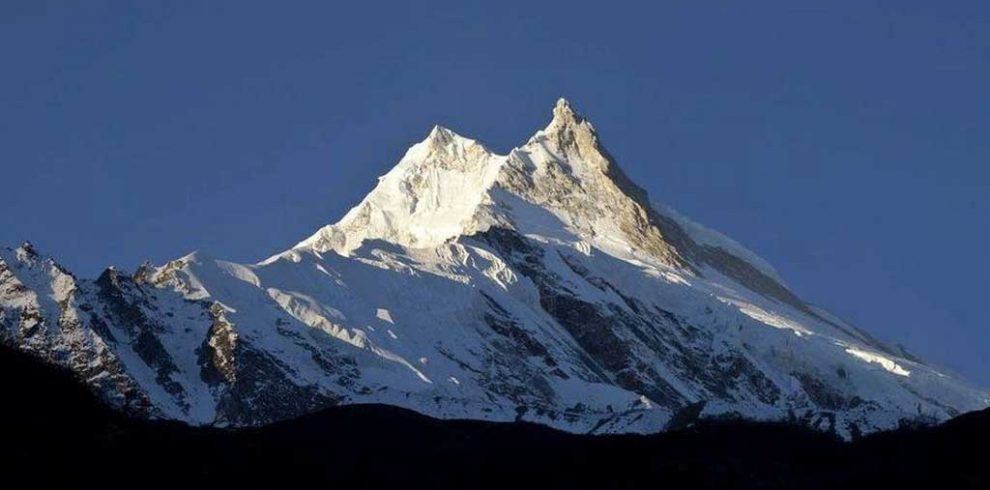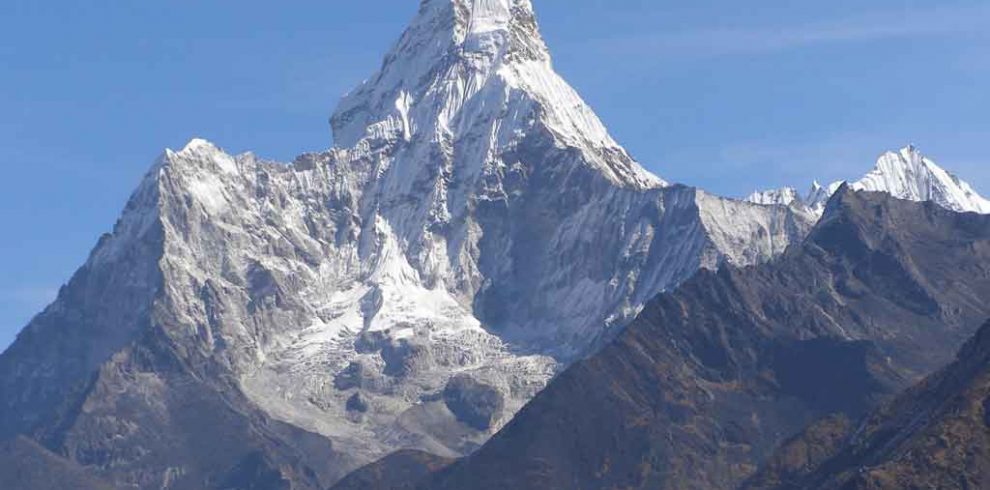The Annapurna Circuit trek is among the most popular trekking trails in Nepal. The trail passes following the Marshyangdi River upstream with distinct scenery of rivers, flora, fauna and the mountains of course. This route has become famous because of the spectacular views and cultural diversity along the trek. The lower section of the trail at both ends lie on the lower elevations. It covers with lush green subtropical valleys of villages and terraced farming with predominantly Hindu societies.
Likewise, the villages at higher elevations in Manang and Mustang are influenced by Tibetan Buddhism. We can see a lot of Tibetan cultural influences in the upper Annapurna region. The Annapurna Circuit trek offers a 360 degree view of the mountains as we travel around it. Manang and Mustang refer to as the districts across the Himalayas. A side trip to the highest Lake Tilicho (4,919m/16,139ft) from Manang can be a bonus to really adventurous trekkers.
Brief Itinerary:
| Day | Route | Altitude | Duration |
|---|---|---|---|
| 01 | Drive from Kathmandu to Besi-Sahar | 823m/2,700ft | Drive: 6-7 hrs |
| 02 | Trek Besi-Sahar to Bahundanda | 1,310m/4,298ft | Trek: 5-6 hrs |
| 03 | Trek Bahundanda to Chamje | 1,430m/4,691ft | Trek: 5-6 hrs |
| 04 | Trek Chamje to Dharapani | 1,860m/6,100ft | Trek: 5-6 hrs |
| 05 | Trek Dharapani to Chame | 2,670m/8,760ft | Trek: 5-6 hrs |
| 06 | Trek Chame to Lower Pisang | 3,200m/10,499ft | Trek: 5-6 hrs |
| 07 | Trek Lower Pisang to Manang | 3,540m/11,614ft | Trek: 4-5 hrs |
| 08 | Rest and acclimatisation day in Manang | 3,540m/11,614ft | Free time |
| 09 | Trek Manang to Yak Kharka | 4,018m/13,182ft | Trek: 3-4 hrs |
| 10 | Trek Yak Kharka to Thorung Phedi or High Camp | 4,925m/16,158ft | Trek: 3-4 hrs |
| 11 | Trek to Muktinath crossing over Thorung la pass | 5,416m/17,769ft | Trek: 7-8 hrs |
| 12 | Trek Muktinath to Jomsom | 2,720m/8,924ft | Trek: 4-5 hrs |
| 13 | Trek Jomsom to Ghasa | 2,010m/6,594ft | Trek: 6-7 hrs |
| 14 | Trek Ghasa to Tatopani | 1,190m/3,905ft | Trek: 3-4 hrs |
| 15 | Rest day at Tatopani (Natural hot spring pond) | 1,190m/3,905ft | Free time |
| 16 | Trek Tatopani to Shikha | 1,935m/6,348ft | Trek: 4-5 hrs |
| 17 | Trek Shikha to Ghorepani | 2,860m/9,383ft | Trek: 3-4 hrs |
| 18 | Trek Ghorepani to Tikhedhunga via Poon hill | 3,210m/10,532ft | Trek: 5-6 hrs |
| 19 | Trek to Birethanti and Nayapul, then drive to Pokhara | 884m/2,900ft | Trek: 3-4 hrs Drive: 1 hour |
| 20 | Drive/fly from Pokhara to Kathmandu | 1,350m/4,430ft | Bus: 6-7 hrs Air: 0.5 hour |
The traditional round Annapurna trek route starts anti-clock from Besisahar to Nayapul and reaches its summit in Thorung la pass (5,416m/17,769ft). The route rewards with the great views of world famous mountains namely Manaslu, Lamjung Himal, Annapurna II, Annapurna IV, Annapurna III, Gangapurna, Annapurna I, Annapurna South, Machhapuchhre (Fishtail) and Dhaulagiri. The world’s deepest gorge and the views from Poonhill make the trek unforgettable.
The trek also passes through Buddhist and Hindu shrines, notably the temple of Muktinath, a holy site for both Buddhists and Hindus. There are also many old monasteries present along the trail. So, we can say that the Annapurna Circuit trek is a perfect blend of adventure and culture making a classic adventure trek. The Annapurna Circuit trek is one of the top twenty scenic trekking trails all over the world.
Why Choose Around Annapurna Trek?
We have accumulated some reasons that make Annapurna Circuit trek distinct.
- Annapurna region offers gradual ascent including the challenging Thorung la pass at an elevation of 5,416 meters from sea level.
- The entire Annapurna region covers a diverse topography ranging from high hills to snowy peaks with sub-tropical to alpine forest.
- Its northern border connects with Tibet and offers views of extended Tibetan plateau where the descendants from Tibet have settled for years.
- Annapurna Circuit trek passes around the Annapurna Himalayan Range offering 360 degree views along the trek.
- The Annapurna trail offers a visit to the famous pilgrimage site of Muktinath Temple, worshiped by both Hindus and Buddhists.
Annapurna Circuit Trek Itinerary and Duration
Annapurna Circuit trek was a popular 20-day trip until few years back. The ongoing road construction along the Annapurna trail has reduced its charm though. Most of the places on the trail such as Khudi, Jagat, Chamje, Dharapani, Bagarchhap, Chame, Pisang, Manang, Muktinath, Jomsom, Marpha, Ghasa, Tatopani and Tikhedhunga are facilitated with motorable road.
The road crosses the trail time and again. However, there are options to avoid the motorable roads in some places. Our leaders will try their best to escape the motorable roads where possible and the sceneries are still the same. This is to notify that the weather, transport or other multiple factors can sometimes result in a change of itinerary and trek duration.
Annapurna Semi Circuit Trek
Because of the current road construction project around the traditional Annapurna Circuit trail, this popular trek is losing number of trekkers in the recent years. However, it is still the same between Manang and Muktinath including the Thorung la pass. Enthusiast trekkers can also add a side trip to the Tilicho Lake before crossing the pass and gain some acclimatization.
Therefore, we have thought of Annapurna Semi Circuit trek with a drive further from Besisahar to Chame or Manang. Then the trek starts and continues over the Thorung la pass. Trekking will end at Muktinath, on the other side of the pass. Shared vehicles are available from Muktinath to Pokhara. There is a direct bus facility from Jomsom to Kathmandu if you don’t want to stop in Pokhara.
Please Contact Us for Annapurna Semi Circuit Trek itinerary. The itinerary covers half Annapurna Circuit trek route including the popular Thorung la pass. We will customize this trek according to your vacation. Alternatively, this trek can also be combined with the regulated Nar Phu Valley Trek – 10 Days. Nar Phu will require a separate special permit though.
Difficulty of Annapurna Circuit Trek
The Annapurna Circuit trek is a medium-hard level trip with a challenging pass of Thorung la (5,416m). However, no rope climbing is essential to cross this pass and is suitable for passionate trekkers willing to trek for 5-6 hours each day. This may require walking 6 to 7 hours or more on some days though. So, it gives a pleasure of success over the hardness.
Trekkers with moderate level of fitness can join this trek. We recommend some physical training at home prior to the trip. Jogging or some hill walking if possible is a good idea to enhance your strength and ability. Any previous hiking experience in the Himalayas would be an asset. There are some difficult steps on some days but not impossible.
Can I trek around Annapurna without a Guide?
Annapurna Circuit trek has a friendly route almost everywhere. There are tea shops and lodges at regular intervals. A good map of Annapurna region is advisable for better experience. However, it is not just a walk through the mountains. Due to the missing number of trekkers, it is not suggested to trek alone or without a guide around Annapurna. Safety should be a major concern to everybody.
There are many nice stories behind the settlements and their ethnicity throughout the trail. Notably, it includes the challenging Thorung la pass as well. Having a guide on this trek will facilitate with the information on mountains, plants, animals and people. While it is a high altitude trek, your guide is a great company for any unexpected risks. Also, it will be a support to the local economy hiring a guide.
Best Time for Annapurna Circuit Trek
Like other Himalayan trekking in Nepal, the best time for Annapurna Circuit trek is from March to May and September to November. The Annapurna Circuit route gets busier in spring and autumn but monsoon and winter are quieter. Trekking in winter may not be possible due to ice/snow blockade over the Thorung la pass while trekking in summer is preferred by some trekkers.
Looking for a trek to the more center of Annapurna region?
Then Annapurna Base Camp trek is the best alternative. The 9-day trek starts and ends in Pokhara.
Overview
- The challenging Thorung la pass (5,416m/17,769ft)
- Typical Mountain huts in Manang
- Views of plateau like in Tibet
- 360 degree views of the Annapurna Himalayan Range
- The famous pilgrimage site of Muktinath Temple
- Great view the of Dhaulagiri Ice-fall
- The world’s deepest Kaligandaki gorge
- The natural hot spring pond at Tatopani
- Impressive Sunrise and Panoramic views from Poonhill
- The great country sides, landscapes, mountains and rivers











